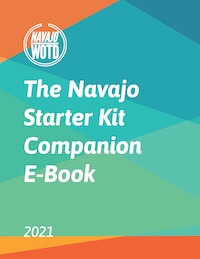adą́ą́dą́ą́'
yesterday
ud daa daa
Adą́ádą́ą́’ is the Navajo word for ‘yesterday.’
Here’s an example of its usage:
Adą́ádą́ą́’ Hoozdohdi be’ak’idgi łóó’ t’óó ahayóí dzíłts’áníghį́!
Yesterday in Phoenix at a pond I made a big catch of fish!
We cheated and threw in a couple extra words that may be new to you. Hoozdoh is the place name for Phoenix, AZ. Be’ak’id is the Navajo word for a pond. Łóó’ means fish in Navajo, and of course t’óó ahayóí means a lot or large amount. And the action word dzíłts’áníghį́ is one we pulled from a reference to making (past tense) a catch.
How would you say you did not catch a lot of fish?
